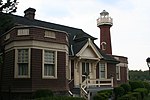Philadelphia Zoo

The Philadelphia Zoo, located in the Centennial District of Philadelphia, on the west bank of the Schuylkill River, is the first true zoo in the United States. It was chartered by the Commonwealth of Pennsylvania on March 21, 1859, but its opening was delayed by the Civil War until July 1, 1874. The zoo opened with 1,000 animals and an admission price of 25 cents. For a brief time, the zoo also housed animals brought over from safari on behalf of the Smithsonian Institution, which had not yet built the National Zoo.The Philadelphia Zoo is one of the premier zoos in the world for breeding animals that are difficult to breed in captivity. The zoo also works with many groups around the world to protect the natural habitats of the animals in their care. The zoo is 42 acres (17 ha) and the home of nearly 1,300 animals, many of which are rare and endangered. Special features include a children's petting zoo, a paddleboat lake, a rainforest themed carousel, a ropes course, and many interactive and educational exhibits.
Excerpt from the Wikipedia article Philadelphia Zoo (License: CC BY-SA 3.0, Authors, Images).Philadelphia Zoo
MLK Drive Sidepath, Philadelphia
Geographical coordinates (GPS) Address Website External links Nearby Places Show on map
Geographical coordinates (GPS)
| Latitude | Longitude |
|---|---|
| N 39.9725 ° | E -75.196666666667 ° |
Address
Philadelphia Zoo
MLK Drive Sidepath
19129 Philadelphia
Pennsylvania, United States
Open on Google Maps










